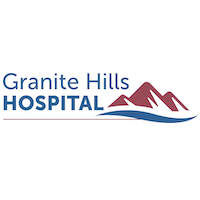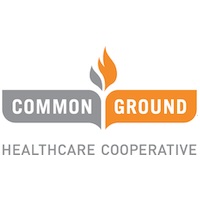
African American community is ‘canary in the coal mine’ for COVID-19 crisis, says Izard

COVID-19 has exposed the health disparities that have long affected the African American community, said Dr. Tito Izard, CEO of Milwaukee Health Services, Inc.
As of Friday morning, African American residents in Milwaukee County accounted
for 115 of the 246 deaths from COVID-19, while making up 26 percent of the county’s population.
At the end of last month, Milwaukee County officials said
that an African American was nearly three times more likely to die of COVID-19 in the county than a white person. And they were seven times more likely to die from COVID-19 than a white person in Wisconsin.
Izard said that African Americans have been “relegated to a permanent underclass in society.”
“The issues of health disparities are not just something we’re seeing with COVID-19,” he said. “It is pervasive throughout all of the various health indicators or healthcare measurements.”
Izard spoke to Wisconsin Health News this week about COVID-19’s disproportionate impact on Milwaukee’s African American community, what needs to be done to further address the pandemic and the role of community health centers in the fight.
Edited excerpts are below.
WHN: What’s the current capacity at your center?
TI: Our federally qualified health center as well as all the others here in town and most of the health systems, if not all, have excess capacity, meaning that we have the ability to take on patients who need immediate or urgent care related to any symptoms that they may have. Now that’s a good thing because that means we’re not going to overextend. When we talk about flattening the curve, that means the curve has been flattened and there is not going to be an overutilization of healthcare resources. So that’s a good thing.
The bad thing about it, or the more difficult thing about it, is that we were too late. We were too late as a community to respond to the immediate needs that existed on the north side of town, which is predominantly the African American community.
So for those first three weeks, where we saw the numbers rising, there was a delay in appropriate response. And the message that was being delivered to the community was to stay home – ‘If you didn’t have severe enough symptoms to end up in the emergency room, you should really try to ride it at home.’ And the community did appropriately respond to that.
As a result, it leaves the whole state with an unknown variable of how many people actually had contracted the virus and now potentially have antibodies available in their system, which potentially could mean that they’re immune. We don’t know the answer to that.
WHN: You’ve described the African American community as being the canary in the coal mine for this crisis. Can you elaborate?
TI:
When you look at the community spread of the virus, the African American community was one of the first populations to be impacted and affected. As a result, the country was not prepared, the state was not prepared and the city was not prepared. So at all levels there was a break down in government and public health to ensure the most vulnerable citizens had adequate access to testing, isolation and contact tracing. As a result of that, the African American numbers significantly went up, even though we all know that that numbers are greater than what is recorded. But even looking at the numbers that were recorded by confirmed cases and then the deaths, we see that it significantly impacted that population.
As a result, there has been a more appropriate response. It’s still not fully adequate, but a greater response. And now the results of that are starting to be seen in some of the other communities. Like the Latino community now has the big wave. But there’s more resources that are being allocated to the Latino community on the south side and especially more resources prepared to be allocated to the white communities as the virus spreads throughout the state. In the end though, what happened to the original first individuals who were impacted and affected, the African American community, essentially suffered the devastation and the consequences of the slow response that occurred as everyone else moves forward and moves on.
And also what ended up happening in the initial first several weeks, the media and most people in society looked at it that if you were contracting the COVID-19 virus, it was blamed on the individual. So it became a conversation of individual failure to do social distancing, which I refer to as physical separation. So failure to do physical separation, failure to do hand sanitizing, failure to do facial masking, resulted in an individual’s failure in contracting the virus.
In reality, it wasn’t an individual’s failure. It was a failure of a society to provide adequate resources to allow the most vulnerable citizens to prepare to be safe. Still today, there’s not a consistent, uniform approach of getting hand sanitizer and masks into communities, assisting people with being able to do physical separation. And as a consequence, you had a high peak in the numbers and now the high peak starts to spread from the most vulnerable group, which was African Americans, to the Latino community and other vulnerable minority communities and eventually it will work its way up in the white population.
But like the canary in the coal mine, when we say we’re all in this together, the canary is in the coal mine together with all the workers. But in the end, the canary does not come out, and everyone else does. So yes, we may be in this all together, but the consequences of being in this together are not experienced equally.
WHN: What do you see as needed to improve upon the response?
TI: Despite the fact that we’re a couple of months into this pandemic crisis, still today, there is not adequate supply of those things that we know that can help reduce a person’s risk of contracting the virus. For example, at the community level, now I know there’s discussions, but as of today, and I’m looking out my window right in the central city, if someone in one of the central city houses asks, ‘How do I get a mask? Because I need to go to the grocery store. How do I get hand sanitizer? How do I get some of the basic things? How do I get sanitation wipes to clean my house?’ If they go to the local stores where they have access, those items are not present in the stores. In order to get them, you either have to have access to Amazon and have it delivered and potentially pay a much higher cost for those items. Or you have to drive out to the far suburbs and hopefully you hit the jackpot. Because even in the suburbs, a lot of those items have limited supplies. So you almost have to time it correctly to get there or go frequently enough in the suburbs to find some of these items, even toilet tissue. This is a common experience that we’ve all gone through. But those who have access to economic resources can weather their way through the situation. But if you’re in the central city, you don’t.
So one of the responses that should be taking place at the local, municipality and state level is providing adequate supplies in the neighborhoods for people to have those core components so that people can try to be safer. And that failed.
Another big failure component at this time – even today, contact tracing is still not adequately being instituted in our communities. The National Guard in the first week did about 10,000 tests between the north and south side and are anticipating a 4 to 5 percent infectivity rate. So about 4 or 5 percent of the people would be affected. That’s potentially 400 or 500 people. If 400 or 500 people are positive, and every single person who’s positive may have had contact with at least eight people for the contact tracers, you would anticipate at least six to eight people they have to reach out to, that could potentially be 3,200 people. Now assuming there is some overlap between some of the people who are positive, let’s say there’s only 2,500 people you have to reach out to. There are not enough contact tracers presently on the ground ready to go to contact 2,500 people in the Milwaukee community in the next 24 hours.
Those are examples of things of the break down and the failure of being able to anticipate the needs. Now that’s today, when our numbers are low. Imagine what those numbers were a month ago when we were having much higher numbers, especially on the north side of town. And that’s why we saw the spread be so great on the north side of town. It was a failure to be able to anticipate and produce resources to the community so they could remain safe.
WHN: What are the next steps to address COVID-19?
TI: Whenever a person is in a crisis, chaos or a stressful situation, all people, none of us really think just completely logically. So if you think about the linear, logic model of thinking, of just saying, ‘Well, if we provide people with factual information, they’re going to make all the perfect choices.’ That does not happen in crisis…
Instability creates dissociative behaviors. The more unstable a person is, the more likely that person will make decisions that are inconsistent with their own faith, values, beliefs and character. Because instability creates dissociative behaviors, when you’re dealing with a vulnerable population like the African-American community, that means you cannot approach the improvement, the correction – we can’t do prevention for COVID-19 strictly by only providing the community with information. At this point, there’s so much distrust in the system that people won’t even listen to the information.
So in order to successfully be able to give people the information that they need to help them be safe and well, that’s where you have to have systems and government be able to hopefully have relationships with the community. But if they don’t, they have to build the relationships with grassroots community first and foremost really in order to do anything successful. Unfortunately, those relationships are not as strong as they need to be in Milwaukee.
So what needs to happen? What needs to happen is that those who have access and control over resources that need to get distributed, that group of people needs to work with grassroots organizations who have credibility at the community level. Because in this situation where instability creates dissociative behaviors, people now won’t even listen to these public officials because they just watched their community get devastated by, first, the health devastation from the COVID-19 virus and now the economic devastation that’s happening as a result of the greater recession or depression that’s getting ready to hit.
So people are going to be deeply rooted in their narrative of how and whether the system works for them. And because minority populations, especially vulnerable minority populations, know that the system does not work for them, that they’re not going to trust someone coming into their community and saying, ‘Hey, take this vaccination. Hey, do this.’ The only way when a person is in that dissociative mindset, the only thing that really gets through is credibility. And that is only developed with relationships. This is where the grassroots organizations and individuals, those that have been working with the community for periods of time, and they have the credibility enough, they can deliver the message that, ‘No, it’s OK, take this vaccination’ or ‘Yes, it’s OK, we’ve got to do this test.’ That’s how you get through.
WHN: Circling back to testing, what role will community health centers be doing to meet the state’s goal of testing?
TI: They really do work closely with their communities and have developed years of trust and relationship and credibility. The role of the federally qualified health center is not just about being an access point for testing. The role of the community health center is about reconnecting the person to continuity of healthcare.
That’s one of the challenges related to the National Guard testing. It’s great for people to find out what the result is. But right now there is no connection to that test report that you receive and your ability to follow up with anyone else in healthcare. So now you have a person who, whether they have insurance or not, that person has information regarding their positive test. But we just talked about the lack of contact tracing. So the question is how long will it take for somebody to contact trace them?
If you have relationship with your healthcare provider, even if you weren’t receiving contact tracing, you would talk to your healthcare provider. And they would really give you some really good information to stay safe and hopefully be able to help you be able let you contact or notify people who may be close to you.
And again, continuity of care only works with trust. The value of a federally qualified health center is in the long-term relationships that we have with our patients and our community.
Wisconsin Health News is removing the password on all stories related to the coronavirus. For the latest developments follow us on Twitter at @wihealthnews or check out our website. For complete healthcare coverage, sign up for a free trial to our daily email newsletter.




























.jpg?bwg=1612548324)

